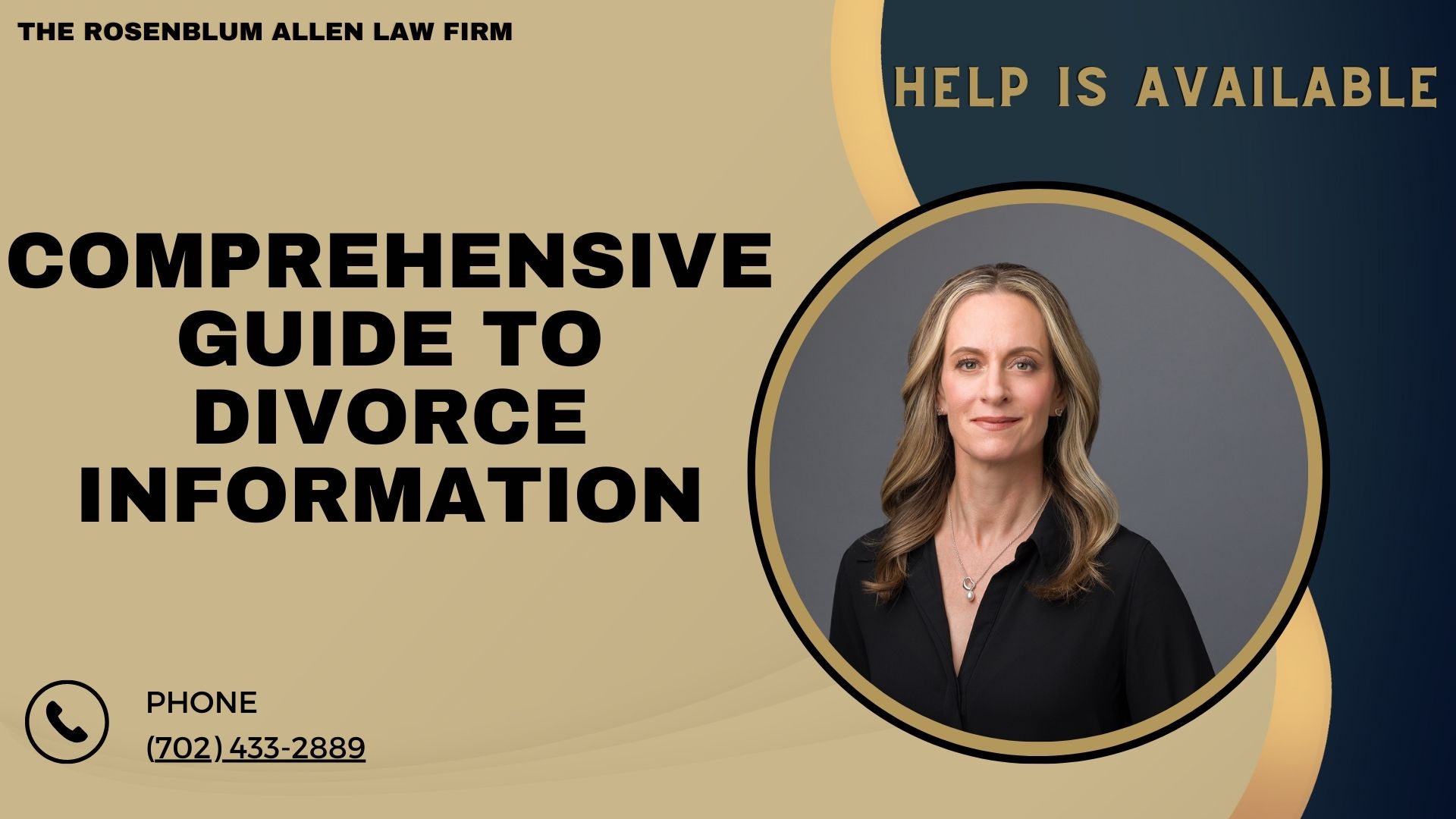Divorce is a significant life event that can bring a mix of emotions and challenges. Understanding the legal processes can provide clarity and help you navigate this difficult time more effectively. This guide will equip you with essential information about divorce laws, the steps involved in the divorce process, and other critical aspects such as child custody and financial matters. Whether you’re contemplating divorce or already in the midst of one, knowing what to expect can alleviate some of the stress and uncertainty.
Understanding Divorce Laws
Definition of Divorce
Divorce marks the legal end of a marriage. It dissolves the marital bond and involves the division of assets, determination of alimony, child custody, and other legal matters.
Legal implications of divorce
Divorce changes your legal status from married to single, affecting your eligibility for affecting your eligibility for health insurance, tax benefits, and entitlements.
Differences between divorce, annulment, and separation
- Divorce terminates a legally valid marriage.
- An annulment declares a marriage null and void as if it never legally existed.
- Separation allows couples to live apart without legally ending the marriage.
Grounds for Divorce
Understanding the grounds for divorce is crucial as it influences the proceedings and potential outcomes.
No-fault versus fault-based divorce
- No-fault divorce: Neither spouse is required to prove fault or wrongdoing by the other.
- Fault-based divorce: One spouse alleges that the other’s misconduct (e.g., adultery, abuse) led to the breakdown of the marriage.
Common legal grounds for divorce
- Adultery
- Desertion
- Mental or physical cruelty
- Addiction or habitual drunkenness
- Incarceration

The Divorce Process
Filing for Divorce
The first step in obtaining a divorce is filing the necessary paperwork with your local court.
How to file for divorce
- Gather required documents (e.g., marriage certificate, financial records).
- Complete the divorce petition outlining your grounds and terms for divorce.
- File the petition at your local county court.
Necessary documentation and legal forms
- Personal identification (ID, passport)
- Financial statements (bank accounts, investments)
- Property deeds and vehicle registrations
- Children’s birth certificates (if applicable)
Serving Divorce Papers
Once you file for divorce, the next step is to officially notify your spouse, who is serving divorce papers.
Methods of serving divorce papers
- Personal service: Papers are handed directly to the spouse.
- Service by mail: Papers are sent via certified mail with a return receipt.
- Service by publication: Used when the spouse’s location is unknown, involving publishing the notice in a newspaper.
What to do if the spouse cannot be located
- Seek permission from the court to use alternative methods such as publication.
- Provide evidence that reasonable efforts were made to locate the spouse.
Responding to Divorce Papers
Receiving divorce papers can be daunting, but understanding how to respond is critical to protecting your interests.
Options available upon receiving divorce papers
- Agree to the terms and sign the papers.
- Dispute the terms and file a response with the court.
Time limits and legal considerations
- Generally, you have 20 to 30 days to respond after being served.
- Failing to respond can result in a default judgment against you.
This introduction to the divorce process covers the basic legal framework and initial steps. Understanding these fundamentals can help alleviate some stress and prepare you for the following stages: dealing with financial aspects and child custody issues, which we will explore further in subsequent sections.

Financial Aspects of Divorce
Division of Assets and Debts
When a marriage ends, the financial ties between the spouses must be resolved fairly and legally.
Understanding community property vs. equitable distribution
- Community Property: Assets and debts acquired during the marriage are divided equally.
- Equitable Distribution: Assets and debts are divided based on fairness, which may not always be equal.
Treatment of debts in divorce
- Both parties are responsible for debts incurred during the marriage.
- Debts are allocated based on who is financially capable of paying them.
Alimony and Maintenance
Alimony, also known as spousal support, is a payment made from one spouse to the other to support the latter’s lifestyle after a divorce.
Types of Alimony
- Temporary Alimony: Given during the divorce proceedings.
- Permanent Alimony: Continues until the receiver remarries or either spouse dies.
- Rehabilitative Alimony: Helps a spouse gain skills to become self-sufficient.
Factors influencing alimony decisions
- Length of the marriage.
- Each spouse’s financial situation.
- Age and health of the spouses.
Child Support
Child support is a payment for raising a child after a divorce.
Calculating child support
- Based on each parent’s income.
- Considers the number of children and the custody arrangement.
Modifying child support orders
- It can be adjusted if there’s a significant change in financial circumstances.
- Both parents can request a review if needed.

Child Custody and Visitation
Types of Custody Arrangements
Deciding who will take care of the children is a critical aspect of any divorce involving minors.
Legal custody vs. physical custody
- Legal Custody: The right to make decisions about the child’s upbringing.
- Physical Custody: Where the child lives most of the time.
Joint vs. sole custody
- Joint Custody: Both parents share the decision-making and physical custody.
- Sole Custody: Only one parent has the primary role in decision-making and where the child lives.
Creating a Parenting Plan
A parenting plan outlines how parents will raise their child post-divorce.
Components of a Parenting Plan
- Schedule of when the child will be with each parent.
- Decision-making responsibilities.
- Holiday and vacation plans.
Importance of a detailed schedule
- Reduces conflicts and misunderstandings.
- Provides stability and consistency for the child.
Modifying Custody and Visitation
Circumstances change, and sometimes custody arrangements need to be adjusted.
Circumstances under which changes can be requested
- A parent moves to a different location.
- Changes in the child’s needs.
- Changes in the parent’s lifestyle that could affect the child.
Legal procedures for modifying custody
- File a petition with the court explaining the reasons for the change.
- Both parents may need to attend a hearing.
Divorce is complex, but understanding these financial and parental aspects can help make the process more manageable. Each section of this guide aims to provide the necessary tools to approach these challenges with knowledge and confidence.

Breaking It All Down
Navigating a divorce is hard. But, being well-informed can greatly ease it. This guide has covered many critical topics. It covered understanding the laws of divorce and the procedures. It also covered addressing money issues. It covered making choices about child custody and support. By knowing the rules and what to expect, you can make better choices. You can approach this tough transition with more control and confidence.
Remember, while this guide provides a comprehensive overview, each divorce is unique. You need to seek personalized advice from lawyers. They must understand your situation. Also, counselors or support groups can help. They can be invaluable during this time.
This guide’s goal is to give you knowledge. It will help you navigate the complexities of divorce with clarity. It will help you move forward to a new life with optimism and resilience. If you have more questions or need specific advice, consider contacting a divorce attorney. They can provide guidance tailored to your circumstances.

Frequently Asked Questions
How long does a typical divorce process take?
The duration of a divorce varies widely. Uncontested divorces can be quick, within a few months, while contested ones might take over a year. It depends on various factors such as the complexity of the case and the jurisdiction.
Can I get divorced without going to court?
Yes, if both parties agree on all aspects (an uncontested divorce), it’s possible to finalize without a court hearing. However, paperwork still needs court approval. This streamlined process can save time and reduce legal fees.
What is the difference between legal separation and divorce?
Legal separation involves living apart and formal arrangements without ending the marriage. Divorce legally dissolves the marriage. Legal separation provides a middle ground for couples who may not be ready for divorce but want to establish legal boundaries.
How is child custody determined if the parents cannot agree?
If parents can’t agree, the court decides based on the child’s best interests, considering factors like age, emotional ties, and parental abilities. This ensures that decisions prioritize the well-being of the child above all else.
What should I do to prepare financially for a divorce?
Gather comprehensive documentation of assets, debts, income, and expenses. Open individual bank accounts, set up a budget reflecting post-divorce finances. This proactive approach can help you navigate financial negotiations with confidence and clarity.
How can I modify a divorce decree?
Petition the court that issued the ruling, showing significant changes like income, relocation, or the child’s needs. Seeking legal counsel is essential to understand the process and requirements for modification.
What rights do grandparents have regarding visitation?
Grandparent visitation rights vary by state. They can request visitation, but the court considers the child’s best interest. Understanding the laws in your state and seeking legal advice can help grandparents navigate this complex issue.
Are there alternatives to traditional litigation for getting a divorce?
Yes, mediation and collaborative divorce are options. In mediation, a neutral third party helps agree, while collaborative divorce involves working with attorneys outside of court. These alternatives prioritize cooperation and communication, potentially reducing conflict and emotional stress.
Can debts be split differently than 50/50 in a divorce?
Yes, debts can be split based on financial situations, debt nature, and state laws. Fair distribution may not always mean an equal split. Understanding your rights and responsibilities regarding debt division is crucial for financial stability post-divorce.
How can I ensure I get a fair settlement in my divorce?
Hire a competent attorney, fully disclose assets and debts, and consider future needs when negotiating the settlement. Seeking professional guidance and advocating for your interests can help achieve a fair and equitable resolution.

Glossary
Absolute Divorce is the final legal dissolution of a marriage, in which the marriage is wholly terminated under the law.
Alimony is a financial support payment made by one spouse to the other after a divorce, intended to provide financial stability.
Annulment: A legal procedure that cancels a marriage, declaring it null and void as if it never existed legally.
Child custody: The legal and practical relationship between a parent and child includes caring for and making decisions about the child.
Child Support: Financial payments made by a non-custodial parent to the custodial parent to assist with child-raising expenses.
Community Property: A principle in some states that property acquired during the marriage is owned jointly by both spouses and should be divided equally upon divorce.
Contested Divorce is a type of divorce in which one or more issues (such as asset division, alimony, or child custody) are not agreed upon by the spouses and must be resolved by the court.
Default Judgment is a binding judgment in favor of one party based on the other party’s failure to take action. It is commonly granted when one spouse does not respond to a divorce petition.
Equitable Distribution is the division of property and debt obligations based on fairness, which is used in some states instead of community property rules.
Fault-Based Divorce: A divorce that is granted based on the wrongful conduct of one of the spouses.
Legal Custody is the authority granted to a parent or guardian to make major decisions on behalf of a child, including education, health care, and religious upbringing.
Legal Separation: A court-approved arrangement where a married couple lives apart but remains legally married, often involving legally agreed-upon financial and custodial arrangements.
Mediation: A form of alternative dispute resolution in which a neutral third-party mediator helps disputing parties find a mutually satisfactory solution, often used in divorces to settle disputes outside of court.
No-Fault Divorce: A type of divorce where the spouse filing does not have to prove any fault on the part of the other spouse, such as adultery or abuse.
Parenting Plan: A document that divorcing parents create to outline how their children will be cared for and supported, including schedules and guidelines for parenting time, decision-making responsibilities, and financial provisions.
Physical Custody: Refers to with whom a child will primarily live after a divorce. The parent who has physical custody is responsible for day-to-day care.
Rehabilitative Alimony: Temporary financial support paid to a spouse to help them gain employment or education necessary to become self-sufficient.
Separation Agreement: A written agreement between spouses that outlines the terms of their separation and addresses matters such as asset division, alimony, child support, and custody.
Sole Custody is an arrangement in which only one parent has either legal or physical custody of a child, with the other parent typically having rights to visitation.
Spousal Support: Another term for alimony is financial support paid by one spouse to another post-divorce to assist with living expenses.
Uncontested Divorce: A divorce in which both spouses agree on all significant issues, allowing for a smoother and often quicker legal process.

Additional Resources for You
For those seeking additional resources during this challenging time, our lead attorney, Molly Rosenblum Allen, Esq., has created a comprehensive suite of resources to support you. Each resource offers targeted information to help you navigate the specific aspects of your divorce process and related concerns. Here are some valuable resources you might find helpful:
- Las Vegas Divorce Attorney: Detailed guidance from our experienced divorce attorneys serving Las Vegas.
- Nevada Divorce: Everything you need to know about filing for divorce in Nevada.
- Surviving Divorce: Strategies and advice to help you cope with the emotional and practical aspects of divorce.
- What Happens If You Don’t Sign Divorce Papers: Important information on the consequences and options available if one spouse refuses to sign divorce documents.
- Do I Need an Attorney to Get a Divorce: Insights into whether you need legal representation during your divorce.
- What is a Collaborative Divorce: An explanation of collaborative divorce and how it could be beneficial for you.
- How to Win a Divorce: Tips and tactics for approaching your divorce strategically.
- Switching Lawyers During Divorce: Guidance on how to change your legal representation mid-divorce if needed.
- How Long Does a Divorce Take in Nevada: Information on the timeline for divorce proceedings in Nevada.
- High Conflict Divorce: Advice for navigating high-stress, contentious divorce scenarios.
- Questions to Ask a Divorce Lawyer: A list of crucial questions to discuss with your divorce attorney to better prepare for your case.
Molly Rosenblum Allen, Esq., and our team are dedicated to providing you with the necessary tools and information to support you through your divorce process, offering effective advice tailored to your unique circumstances.

Outside Resources for You
American Bar Association: A comprehensive resource for finding guidelines on family law and referrals to accredited lawyers.
National Family Law Advisory Council: Provides insights from leading family law professionals and resources for complex family law issues.
Psychology Today: Offers a therapist directory and articles about coping with divorce emotionally and psychologically.
National Parents Organization: Focuses on promoting shared parenting and providing resources to help navigate child custody.
WomensLaw.org: Offers legal information and support resources specifically for women going through divorce, including advice on safety and protective orders.
Mediate.com: Provides articles and resources on resolving disputes through mediation, an important consideration for those looking to avoid contentious court battles.
Smart Stepfamilies: Offers guidance and resources for blending families post-divorce, which can be a complex and sensitive endeavor.

A Special Message from Our Lead Attorney, Molly Rosenblum Allen, Esq

Dear Reader,
Thank you for taking the time to explore our resources. I hope you find the information helpful and enlightening as you navigate this challenging period. Understanding your options and rights is crucial in making informed decisions about your future.
If you’re ready to take the following steps or have any questions about your situation, please call me and my team at (702) 433-2889. We are here to support and guide you through the legal processes ahead, ensuring you receive the personalized attention and respect you deserve.
We look forward to assisting you.
Warm regards,
Molly Rosenblum Allen, Esq. The Rosenblum Allen Law Firm





